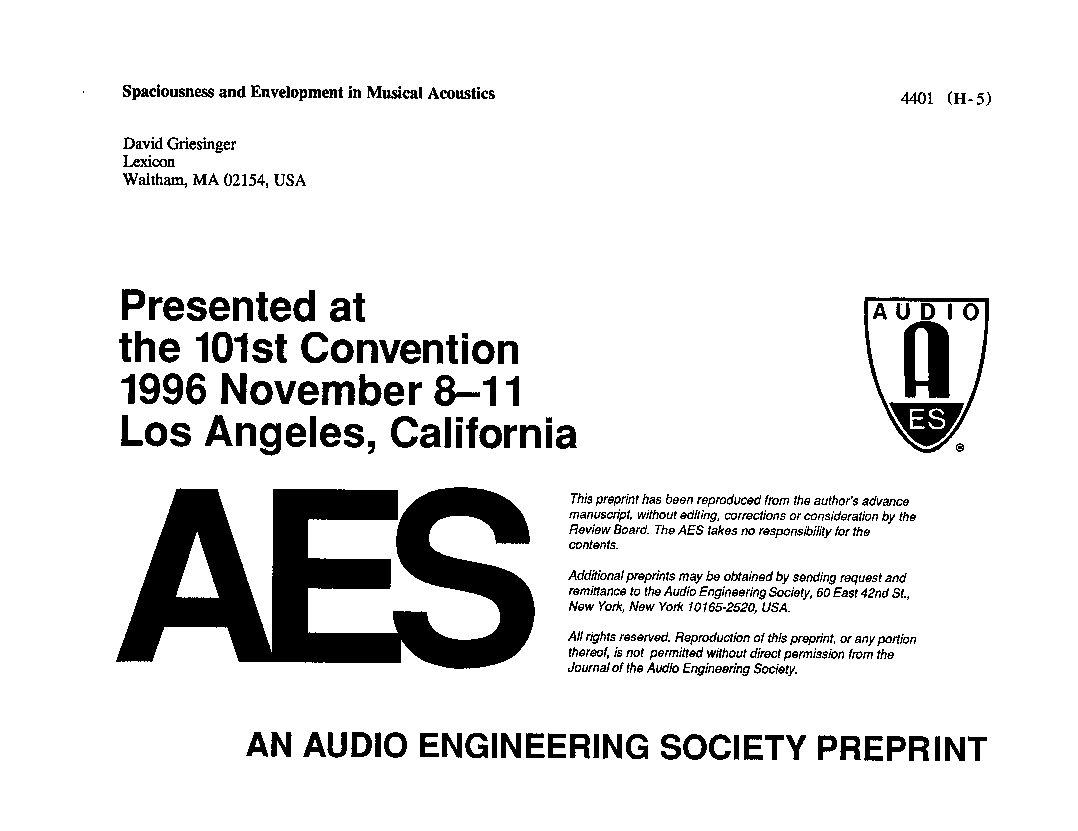Home / Publications / E-library page
You are currently logged in as an
Institutional Subscriber.
If you would like to logout,
please click on the button below.
Home / Publications / E-library page
Only AES members and Institutional Journal Subscribers can download
Conventional wisdom holds that spaciousness and envelopment are caused by lateral sound energy in rooms, and it is primarily the early arriving lateral energy that is most responsible. However by definition small rooms are not spacious, yet they can be loaded with early lateral reflections. This paper briefly presents the perceptual mechanisms for spaciousness and envelopment. The perceptions are found to be related most commonly to the lateral (diffuse) energy in halls at the ends of notes (the background reverberation) and less often, but importantly, to the properties of the sound field as the notes are held. A measure for spaciousness, called laterial early decay time (LEDT), is suggested. Results of this measure in several halls are given. A good match between the new measure and subjective impressions of the halls is found.
Author (s): Griesinger, David
Affiliation:
Lexicon, Waltham, MA
(See document for exact affiliation information.)
AES Convention: 101
Paper Number:4401
Publication Date:
1996-11-06
Import into BibTeX
Session subject:
Spatial Perception and Processing
Permalink: https://aes2.org/publications/elibrary-page/?id=7378
(1572KB)
Click to purchase paper as a non-member or login as an AES member. If your company or school subscribes to the E-Library then switch to the institutional version. If you are not an AES member Join the AES. If you need to check your member status, login to the Member Portal.

Griesinger, David; 1996; Spaciousness and Envelopment in Musical Acoustics [PDF]; Lexicon, Waltham, MA; Paper 4401; Available from: https://aes2.org/publications/elibrary-page/?id=7378
Griesinger, David; Spaciousness and Envelopment in Musical Acoustics [PDF]; Lexicon, Waltham, MA; Paper 4401; 1996 Available: https://aes2.org/publications/elibrary-page/?id=7378